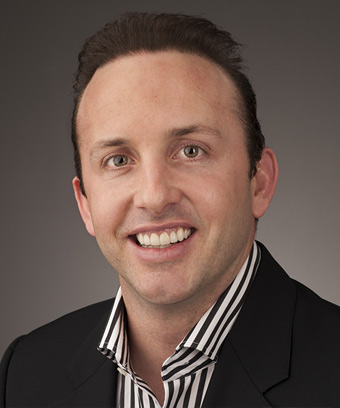Avoiding these five mistakes will make you a better investor
 The path to reaching your property investment wealth goals will be shorter and smoother if you can avoid making these five key errors.
The path to reaching your property investment wealth goals will be shorter and smoother if you can avoid making these five key errors.

Blogger: Ryan Crawford, founder & group director, Crawford Realty
As a young, inexperienced investor, I made my fair share of mistakes in the early years of my property investment journey. Sure, I’d read plenty of books but with no personal mentor to guide me, I had little idea of what I was really in for when I began my ‘real life’ investing.
Making the mistakes I did and learning from those experiences provided the foundations of my investment coaching capabilities today. I’m now able to share my experiences with others so they can learn from them. However, my journey would have been a lot less painful had I the resources that are available to investors today!
After more than 10 years investing in property, these are my top five ‘Don’ts’! If you can avoid making these mistakes, you’ll find the path to reaching your goals much shorter and smoother!
DON’T buy with emotion
Among my first purchases was an amazing oceanside home. I had visited the property as a guest and was immediately taken with it. I said to myself that if it ever came up for sale, I would buy it, no matter what. Well it did. And I bought it – at well over the asking price. Straightaway I had a severe case of buyer’s remorse. I hadn’t done any due diligence. I hadn’t done any number crunching. I had bought purely on emotion.
It’s essential that you treat investments for what they are – assets that are there to make you money. Completing thorough due diligence and calculating projected returns on every potential investment is the only way to minimise risk and maximise return.
DON’T fail to investigate the best structure for your investments
This is a common mistake to make and one that can cost you thousands in tax each year. It was a valuable lesson that, unfortunately, I learned the hard way!
Before you invest, you need to consider what legal structure will own the property. The most suitable structure will usually depend on your investment strategy – are you investing for tax minimisation, retirement planning, capital growth, cash flow? Are you looking to invest for the short term or long term? Are you building assets to pass on to family? Answering these questions and discussing with your accountant and/or financial advisor will ensure you structure your investments correctly from day one.
For example, positively geared property might be best held in a trust to minimise the tax you pay on the annual cash flow profit. Negatively geared property, on the other hand, might be best held in an individual’s name, which will allow you to claim the tax benefits (Please note: this should NOT be taken as financial advice. Please speak to your accountant or financial advisor to determine the best structure for your personal circumstances).
DON’T buy at the top of the market
For many investors, it’s easy to get caught up in the hype of a rising market. Many times I jumped into property in a market where prices had been rising for more than two to three years. This isn’t the best purchasing strategy if your looking for short-term growth to help fund your growing portfolio.
Learn how to read the property clocks of the areas you’re interested in investing in to identify the market troughs and peaks. This will enable you to buy in at the low points to maximise returns, and help you to avoid buying in at the top when the capital growth curve is reaching its peak.
DON’T over-leverage your portfolio
The ability to release equity from a portfolio to continue investing is one of the greatest wealth-building advantages property investment offers. However, this should not be undertaken without careful consideration. Refinancing loans to release funds can result in an increase in your interest payments. You need to consider whether you can service them!
After becoming comfortable and reaching a medium-sized portfolio, I quickly diversified into coastal land sites and even a small subdivision. While exciting, these projects were very capital intensive and soon drew substantial funds from my portfolio as I released equity to develop. In some cases, I even lost money. This put strain on my serviceability and therefore my ability to grow the portfolio further. I was forced to sell a number of sites and projects to stabilise my portfolio before I could begin building it again.
DON’T get complacent
All investors can be guilty of this – myself included. Once you get comfortable with investing, it’s easy to get complacent. You forget about the impact of interest rates, forget about thorough due diligence, forget to review your portfolio regularly and fail to act swiftly in changing markets.
This is where it’s important to retain some of those qualities from your beginner investor years – the hunger and acute awareness! Experienced investors can easily fall into the complacency trap which can ultimately cost you your success. So stay keen, hungry and involved!
About Ryan Crawford Ryan Crawford is one of Australia’s most successful property investors under 40 and a leading expert in positively geared property investment. In less than a decade, Ryan built a portfolio of more than 40 positively geared properties and is now dedicated to helping others plan and implement successful property investment strategies.
Ryan Crawford is one of Australia’s most successful property investors under 40 and a leading expert in positively geared property investment. In less than a decade, Ryan built a portfolio of more than 40 positively geared properties and is now dedicated to helping others plan and implement successful property investment strategies.
Since establishing Crawford Property Group in 2008, he has coached thousands of everyday Australians to financial freedom through positively geared property. Ryan is regularly featured in the media as an industry thought leader and commentator, including Channel 7’s Today Tonight, national newspapers and investment magazines.
